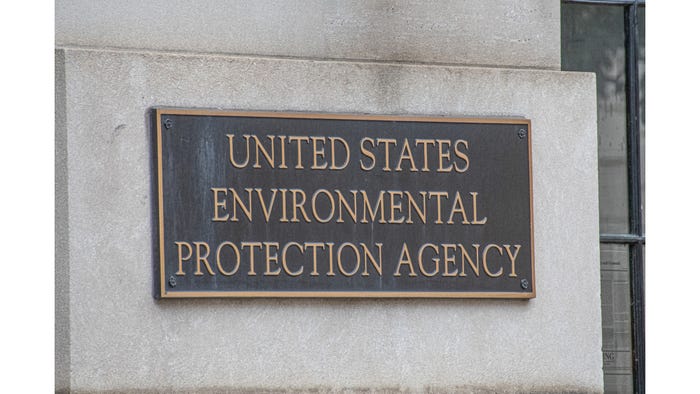The Chemical Industry Under a Second Trump AdministrationThe Chemical Industry Under a Second Trump Administration
While President Trump focuses on US self-reliance, chemical companies could benefit from various changes including higher tariffs and more.

With higher tariffs, a new EPA, and a halt on stricter PFAS limits, chemical companies could see opportunities while President Trump focuses on US self-reliance.
US President Trump has moved to cut career staff at the EPA and other governmental agencies, removed scientific advisers, and pulled the previous administration’s PFAS discharge limits plan that was set to be released for public comment.
The stricter rules under the PFAS limits plan would have increased the safety of public drinking water. However, last fall Trump had promised clean water in the US. The decision to withdraw the draft rule came as Trump issued an executive order to freeze any new federal regulations pending review.
Trump 2.0 & the Chemical Industry
A new report has come out from Roland Berger on Trump’s administration and how the chemical industry will fare in the next four years.
Roland Berger is a global management consultancy for transformation, innovation across all industries, and performance improvement. Founded in 1967, the company is headquartered in Munich, Germany.
The company published a report, “Trump administration 2.0 – Potential impacts on the US chemicals sector,” which reveals the President’s second term to promote US self-reliance to benefit domestic chemical production.
Tariffs
The report shares that tariffs are set to be a key part of the foreign agenda of the new administration; major trading partners will be vulnerable to tariffs as they depend on the US to supply cheap energy and to import a large share of their traded goods. And we have seen this.
Currently, Trump has his sights set on Canada, Mexico, and China — the top three US trading partners. His original plan was a 25% additional tariff on imports from Canada and Mexico and a 10% additional tariff on imports from China. Energy resources from Canada would have a lower 10% tariff. However, Trump's planned increase of 25% tariffs on steel and aluminum imports from Canada will add to other levies on Canadian goods, resulting in a total 50% tariff if threatened duties on all imports from Canada are enacted in March, a White House official said. While Mexico and Canada have just over two weeks until the tariff plan is put into action, as President Trump put a 30-day hold on them until March 4, 2025.
In December 2024, US exports were $266.5 billion, $7.1 billion less than in November. December imports were $364.9 billion, $12.4 billion more than November imports. Here are the top 15 trade partners of the US:

Data: US Census Bureau
In response to the Trump Administration’s planned tariff hikes, The American Chemistry Council stated: “As we review the impacts of these Executive Orders, we would ask that all parties negotiate a solution to the issues behind these Orders as soon as possible. In particular, the US. chemical industry continues to support the USMCA Agreement between the United States, Canada, and Mexico. The USMCA’s Annex on Chemical Substances, created under President Trump’s first administration, is a model for agreements with other countries, advantaging US-based production and promoting science-based regulatory approaches.”
The organization also said that it wants to work constructively with the Administration to advance a trade agenda that addresses genuine challenges to our supply chain resiliency.
Other areas of self-reliance in the Roland Berger report are:
Reducing energy costs and reliance on imports
Leverage US shale advantage to be competitive in the global market.
Deprioritize clean energy and “green energy,” but policies that advance US jobs and increase American energy production (i.e., carbon capture) will be prolonged.
Regulation aimed at reducing government outreach, allowing for capitalistic forces to drive innovation
Many regulatory proceedings will be reviewed, including the emissions standards and Clean Water Act provisions to limit federal overreach and protect private property rights
With the proposed creation of the Department of Government Efficiency (DOGE), the new government may address conflicting environmental regulations that hinder green technology innovation
Federal subsidy programs expected to be limited
This will reduce spending, impacting key chemical sectors
Grants played a significant role in supporting growth in downstream industries like infrastructure, EVs, and semiconductors.
While there are many variants that could alter the above four areas in this report and how the outcome will affect the chemical industry, it is imperative to keep up to date with news coming from the administration. In addition, Roland Berger has laid out five steps for chemical manufacturers to prepare for the policy changes from Trump’s second administration.
Preparing for Policy Changes
Risk Assessment across key performance drivers: Understand how policies might play out, and which strategies might help counter threats to the business.
Prepare supply chain contingency plans: Assess and design new supply chain routes
Design & implement optimized network: Build a localization strategy that reexamines where products should be manufactured in both the long- and short-term.
Establish government affairs: Develop a GA arm that can manage tariffs (i.e., lobbying for exemptions) as well as capabilities in global export areas to determine emergence and retaliatory measures.
Review contracting terms: ensure existing contract structures are able to pass cost increases to the marketplace.
About the Author
You May Also Like




